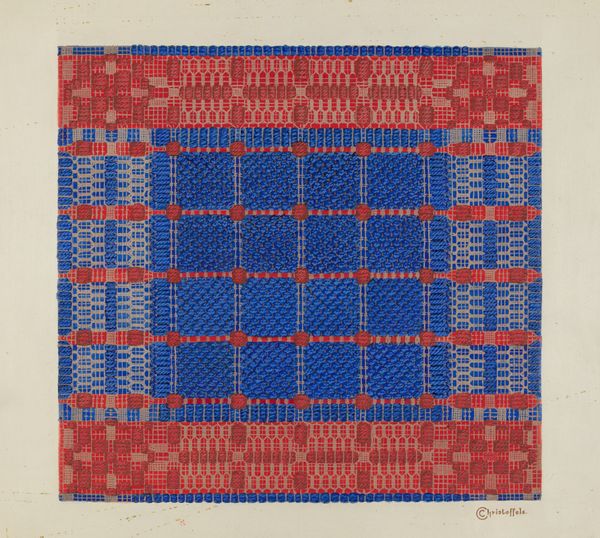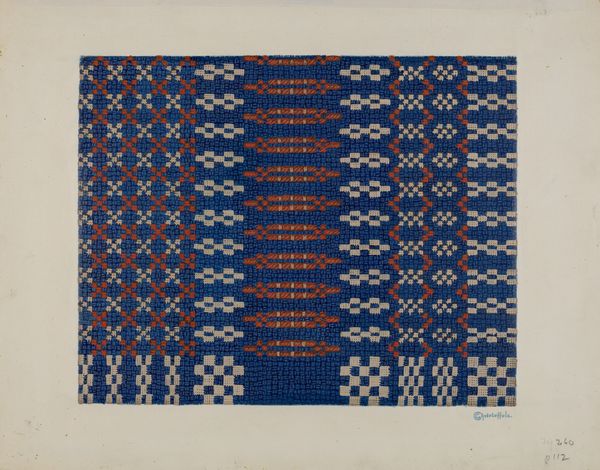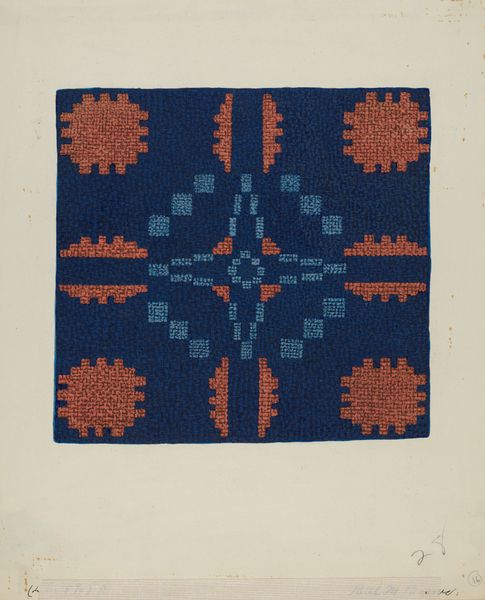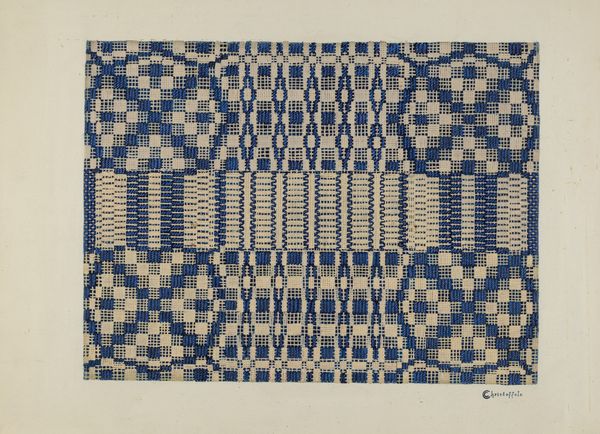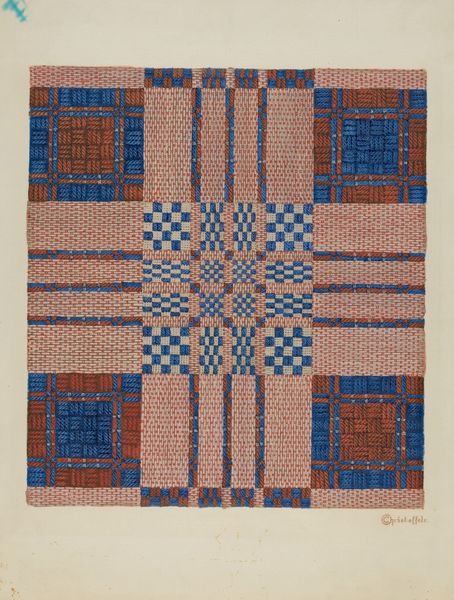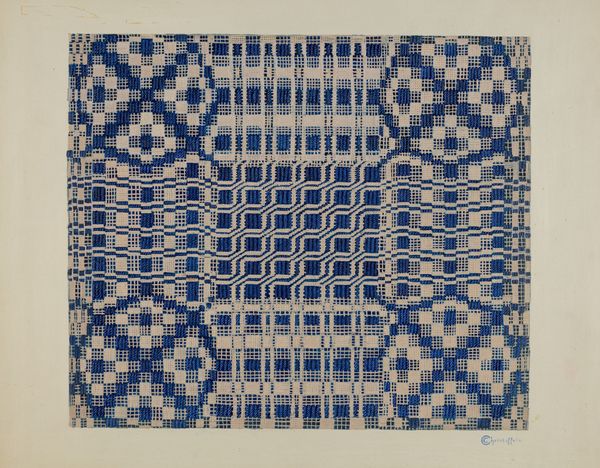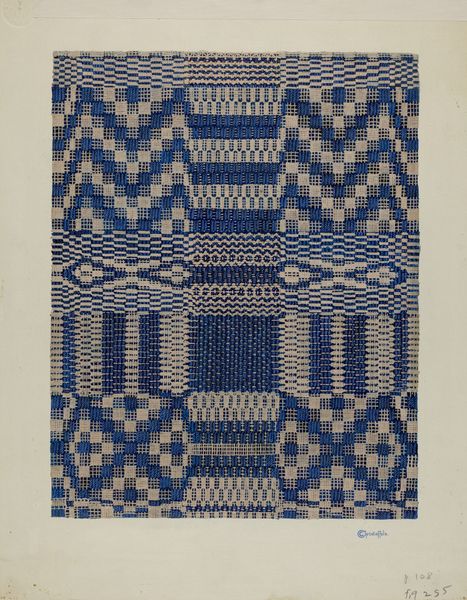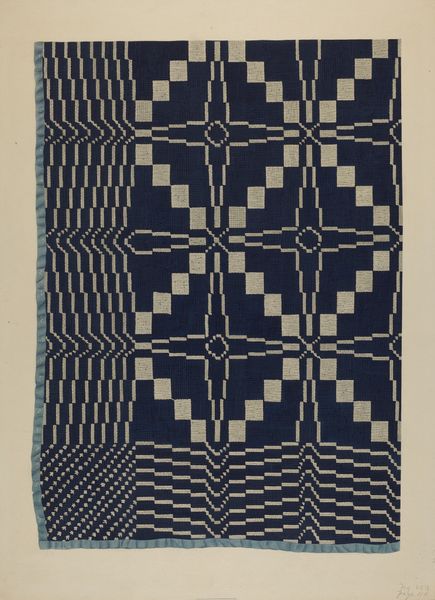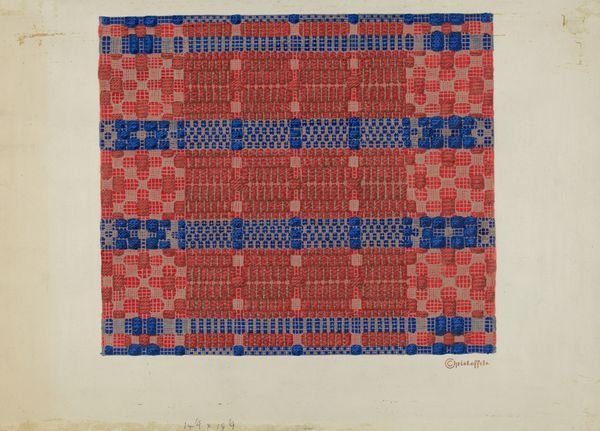![[Coverlet - section] by Cornelius Christoffels](/_next/image?url=https%3A%2F%2Fd2w8kbdekdi1gv.cloudfront.net%2FeyJidWNrZXQiOiAiYXJ0ZXJhLWltYWdlcy1idWNrZXQiLCAia2V5IjogImFydHdvcmtzLzVkMGYxNTBhLTI4MDUtNGYwZS04MDNhLWM2YWNmYjczMDg1Zi81ZDBmMTUwYS0yODA1LTRmMGUtODAzYS1jNmFjZmI3MzA4NWZfZnVsbC5qcGciLCAiZWRpdHMiOiB7InJlc2l6ZSI6IHsid2lkdGgiOiAxOTIwLCAiaGVpZ2h0IjogMTkyMCwgImZpdCI6ICJpbnNpZGUifX19&w=3840&q=75)
textile
#
textile
#
geometric pattern
#
geometric
Dimensions: sheet: 27.15 × 35.56 cm (10 11/16 × 14 in.)
Copyright: National Gallery of Art: CC0 1.0
Curator: Here we have a section of a coverlet, a textile work crafted by Cornelius Christoffels between 1935 and 1942. It is reminiscent of traditional geometric patterns. What strikes you initially? Editor: Well, visually, there’s an almost hypnotic quality to this small section; it seems to pull me into a different state of consciousness, a calm one. It reminds me of mathematical tapestries in some sense... Curator: Indeed. Let's deconstruct this. Notice the grid, the matrix upon which Christoffels builds the design. The blue field is then punctuated by variations on square, rectangular, and curvilinear forms, primarily in contrasting white and tertiary reddish-brown hues. This strict organization lends a surprising energy to the artwork. Editor: I agree that that creates tension and balance; the repeated geometric forms and grid structure feel like the echoes of ancient symbols, something familiar. Looking closely at the pattern and its coloration—it feels very Pennsylvania Dutch or a visual manifestation of fractals. Did it hold a personal significance for its owner? Curator: It could have functioned as an important emblem within a domestic space. The act of creating these complex patterns must have also held ritualistic, therapeutic value as well, reflecting personal memories. However, to speak plainly, there is little readily available biographical information to analyze with structural accuracy the "Coverlet" as an index of Mr. Christoffels psyche. Editor: Regardless of origin, a traditional coverlet provides both physical and psychological comfort, security even. This object preserves something essential about an old folk art. Curator: Perhaps so. I would still caution you from imputing significance, though it cannot be empirically demonstrated that, for Christoffels himself, those psychological significances held. That caveat registered, it would still be worthwhile for someone to study its pattern symmetry using advanced methodologies, so the design structures themselves, as designs, may hold interesting revelations about Christoffels approach to materials. Editor: It’s hard not to feel the human connection embedded within. Hopefully, our exploration of these points gives you something to think about next time.
Comments
No comments
Be the first to comment and join the conversation on the ultimate creative platform.
